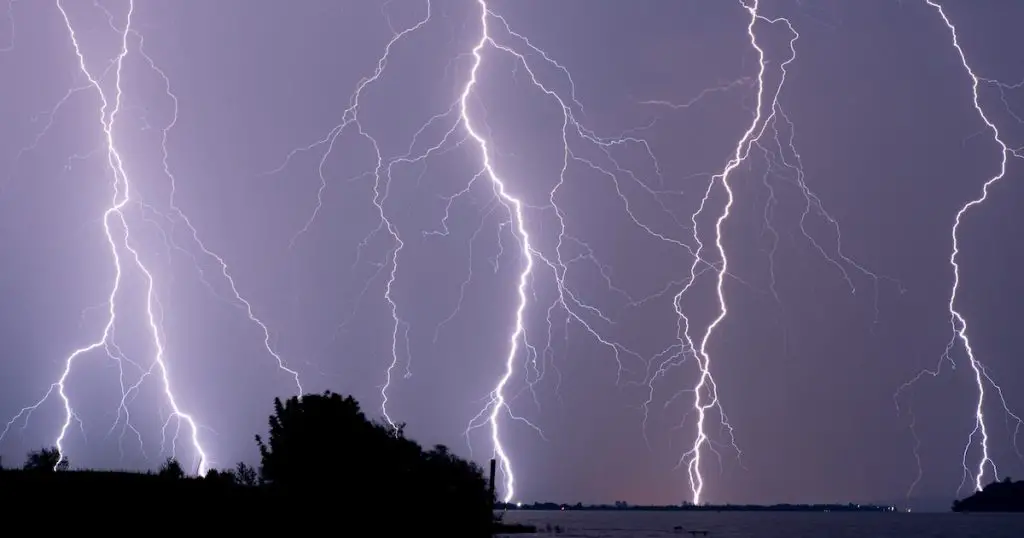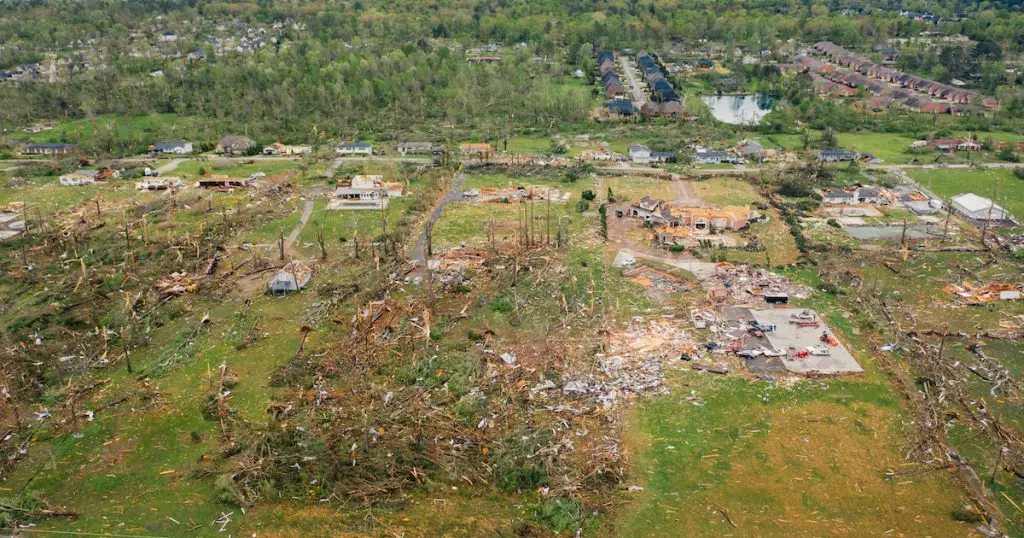Downtown Prescott, a treasure trove of historic allure and architectural wealth, has stood the test of time, narrating tales of bygone eras through its preserved structures. Analyzing the impact of weather conditions on downtown Prescott preservation is crucial for safeguarding this rich heritage.

In this article, we unfold the intricate relationship between diverse weather patterns and the myriad preservation techniques instituted to maintain Prescott’s historic charm.
Historical Overview of Downtown Prescott
Downtown Prescott is a living testament to the architectural splendor and cultural richness of the past. It houses landmarks that whisper the tales of time, each building a chapter in a historical saga. The evolution and transformation of downtown Prescott trace the architectural diversity and the imprint of changing times.
Each landmark here is not just a static piece of the past but a living, breathing entity, sharing insights into historical societal norms, architectural styles, and cultural nuances. Every structure has been a silent spectator to the unfolding of time and change, depicting the metamorphosis of societal structures and architectural designs over the years.
Major Weather Conditions and Their Effects
The diverse weather conditions experienced in downtown Prescott play a pivotal role in shaping the preservation needs of its historic structures. Seasonal shifts bring forth a spectrum of challenges, from the relentless heat of summer to the icy grasp of winter, each imposing its own set of strains on the buildings.
Additionally, occasional weather phenomena like storms and droughts create immediate and long-term impacts, necessitating varied and adaptive preservation strategies. This constant interplay between weather and material imposes a dynamic environment, dictating proactive and reactive conservation measures to ensure the longevity of Prescott’s heritage.
Seasonal Changes
Summers in Prescott are synonymous with intense heat, posing severe challenges to architectural conservation. Extended exposure to high temperatures compromises the materials, threatening the stability of the historic structures.
Employing heat-resistant coatings and consistent upkeep is vital to counteract the impacts of extreme heat, maintaining the structural integrity of Prescott’s historical gems.
The severity of winters brings about contrasting preservation hurdles, mainly due to snow and ice accumulation. These frozen elements can lead to structural damage through water infiltration. Proactive protective measures and continual surveillance are indispensable in preserving the buildings during the harsh winter months.
Implementing weatherproofing solutions and using de-icing agents are fundamental to prevent potential structural damages, thereby preserving the architectural legacy of Prescott.
Occasional Weather Phenomena
Storms are direct assailants to the architectural marvels of Prescott. The powerful winds and torrential rains associated with storms necessitate robust protective measures. Structures need to be fortified with reinforcements and waterproofing to withstand the destructive forces of such weather phenomena, ensuring the preservation of Prescott’s valuable heritage.
Droughts, although subtle, have enduring impacts on historic structures. They can lead to ground movement affecting building foundations.
Addressing drought impacts involves consistent monitoring and incorporation of moisture preservation strategies like landscape alterations and innovative water conservation methods to maintain structural balance during prolonged dry spells.
Microclimate of Downtown Prescott
The microclimate within downtown Prescott is shaped by both natural elements and human-induced urban development. The variability in local weather conditions can pose additional preservation challenges, requiring specific considerations and adaptive measures.
The impact of urban development on microclimate is often overlooked, but it plays a significant role in determining local weather conditions. The urban heat island effect is a noteworthy consequence of urban development, affecting local temperatures and thereby influencing preservation strategies.
Impact on Architectural Materials
The enduring structures of downtown Prescott are in a constant battle with the elements, each weather condition leaving its mark on the architectural materials. The impact is multifold, causing erosion, corrosion, material degradation, and discoloration, challenging the resilience of these historic buildings.
It’s a testament to the vulnerability of materials to environmental conditions, emphasizing the indispensable need for regular maintenance, innovative preservation technologies, and restorative techniques. The meticulous care of these materials is crucial in retaining the original essence and prolonging the life of Prescott’s architectural jewels.
Weathering of Building Materials
Architectural materials undergo continuous weathering due to exposure to various environmental elements. Erosion and corrosion are common deteriorative processes that can significantly affect the longevity of buildings in downtown Prescott.
Developing and applying corrosion-resistant materials and coatings are crucial for enhancing the resilience of structures against these destructive processes.
Material degradation and discoloration are other substantial challenges in preserving the structural and aesthetic integrity of historic buildings. Prolonged exposure to harsh weather conditions can lead to the degradation of materials, necessitating the use of preservation technologies and restorative techniques to maintain the original appearance and structural stability of the buildings.
Preservation Challenges due to Material Vulnerability
The vulnerability of architectural materials to weather conditions necessitates innovative and adaptive preservation strategies. Addressing these challenges involves continuous research, the development of new materials and methods, and regular maintenance activities to ensure the longevity and integrity of Prescott’s historical structures.
In the subsequent sections, the article will delve deeper into the preservation strategies, the economic and social implications of preservation, and the future of preservation in downtown Prescott, providing a holistic understanding of the multifaceted relationship between weather conditions and preservation efforts.

Preservation Strategies
Preservation strategies in downtown Prescott are integral to maintaining the historical and architectural richness of the area. These strategies are multifaceted, encompassing adaptive reuse of buildings, proactive protective measures, sustainable practices, and stringent legal frameworks and policies.
Each strategy plays a crucial role in mitigating the impacts of weather conditions, ensuring the longevity and integrity of Prescott’s historical treasures. The amalgamation of these strategies reflects a comprehensive approach to preserving the architectural heritage while adapting to contemporary needs and environmental conditions.
Adaptive Reuse of Buildings
Adaptive reuse is a cornerstone in preservation strategies, allowing old structures to acquire new purposes, and ensuring their continued relevance and utility. It’s a sustainable approach, marrying the past with the present, ensuring that the buildings continue to serve the community while retaining their historical essence.
Through adaptive reuse, innovative transformations can breathe new life into old structures, thereby contributing to sustainable urban development.
Ensuring the relevance and utility of historic buildings through adaptive reuse not only aids in their preservation but also strengthens community ties. It infuses new energy into the space, making it a living, breathing entity that contributes to the community’s cultural and social fabric while respecting its historical roots.
Protective Measures for Built Heritage
Implementing proactive protective measures is crucial to safeguard Prescott’s built heritage from weather-induced damages. These include regular maintenance, structural reinforcements, and the application of protective coatings, which play a vital role in maintaining the structural and aesthetic integrity of the buildings.
Preservation standards and guidelines are pivotal to ensure the implementation of effective protective measures, facilitating the long-term conservation of Prescott’s historic structures.
Damage mitigation is an integral component of preservation efforts, aimed at minimizing the adverse effects of weather on architectural materials and structures. By routinely assessing and addressing vulnerabilities, the longevity and integrity of historic buildings can be ensured, protecting them from irreversible damage due to varying weather conditions.
Sustainable Preservation Practices
Incorporating sustainable practices in preservation is not just about protecting the past; it’s about ensuring the future.
Employing eco-friendly materials and technologies in preservation processes reduces the environmental impact and promotes the sustainable conservation of historic structures. Leveraging green preservation techniques not only conserves architectural heritage but also contributes to global sustainability goals.
Sustainable preservation practices have a far-reaching impact, fostering an environment-friendly approach to conservation. These practices emphasize the balance between preservation and environmental conservation, reflecting a commitment to responsible stewardship of architectural heritage and natural resources.
Legal Framework and Policies
A stringent legal framework is indispensable for the preservation of historic structures. It establishes the norms, ensuring compliance with preservation standards and guidelines. The enforcement of preservation laws is crucial to avoid unauthorized modifications and demolitions, safeguarding the architectural legacy of downtown Prescott for future generations.
The continual evolution of preservation policies is essential to address the emerging challenges in architectural conservation.
By adapting to the changing needs and advancements in preservation technologies, policies can ensure the effective and sustainable conservation of historic structures, reflecting the evolving understanding of preservation in the contemporary context.
Economic and Social Implications
The pursuit of preservation in downtown Prescott extends beyond mere architectural conservation, reverberating through the economic and social spheres of the community. It acts as an economic catalyst, revitalizing local businesses and boosting tourism, while concurrently knitting the community closer, fostering a shared sense of history and cultural identity.
The social and economic ramifications of preservation are intertwined, with each successful endeavor enhancing community bonds and propelling economic vitality, ultimately contributing to the enriched and sustainable fabric of downtown Prescott.
Impact on Local Economy and Businesses
The meticulous preservation of historic structures has a ripple effect on the local economy. It fosters tourism, promotes local businesses, and revitalizes the economic landscape of downtown Prescott. This economic revitalization not only sustains the local economy but also enhances the overall quality of life for the residents.
The prosperity of local businesses is intertwined with the preservation of historic structures. It creates a unique ambiance, attracting visitors and customers, and providing a distinctive identity to the business landscape of downtown Prescott. This unique blend of history and commerce fosters a vibrant business ecosystem, contributing to the overall economic well-being of the area.

Community Engagement in Preservation Efforts
Community engagement is the backbone of successful preservation efforts. It fosters a sense of collective responsibility and pride among the residents for their heritage. By involving the community in preservation initiatives, a stronger connection is forged between the people and their history, enriching the social fabric of downtown Prescott.
Active community participation in preservation ensures the continuity of cultural heritage and traditions. It enables the transmission of cultural values and historical knowledge to future generations, keeping the cultural essence of downtown Prescott alive and vibrant.
Socio-cultural Importance of Preserved Downtown
Preserved downtown is not just a collection of old buildings; it’s the bearer of cultural identity and a source of pride for the community. It represents the collective memory and shared history of the people, strengthening their sense of identity and belonging.
The socio-cultural importance of preserved downtown extends to its educational value. It serves as a living museum, offering insights into the architectural styles, societal norms, and cultural values of the past, thereby educating the younger generations about their heritage.
Case Studies
Investigating various case studies offers a multifaceted perspective on preservation efforts in downtown Prescott. By examining instances of both successful and unsuccessful preservation initiatives, invaluable insights can be gleaned into the effective strategies and common pitfalls in architectural conservation.
Such studies serve as learning platforms, providing lessons and reflections that are instrumental in refining and optimizing future preservation endeavors. They enrich our understanding and approach to conservation, allowing us to better navigate the challenges and opportunities in preserving architectural heritage.
Successful Preservation Initiatives
Analyzing successful preservation initiatives provides a blueprint for effective conservation strategies. It sheds light on the best practices, innovative solutions, and community engagement models that have proven successful in preserving historic structures.
Successful preservation initiatives are a reservoir of crucial insights and knowledge. They offer practical solutions and innovative approaches to address the challenges encountered in architectural conservation, guiding future preservation efforts and ensuring their success.
Lessons Learned from Failed Preservation Efforts
Studying failed preservation efforts is equally important as it highlights the pitfalls and mistakes to avoid. It provides an opportunity to learn from the shortcomings and refine preservation strategies to avoid similar failures in the future.
The lessons gleaned from unsuccessful preservation endeavors contribute to the refinement of conservation strategies. By understanding the reasons for failure, preservation efforts can be optimized to overcome challenges and achieve successful conservation outcomes.
The Future of Preservation in Downtown Prescott
Preservation is a dynamic field, continually evolving with advancements in technology and changing weather patterns.
It’s crucial to explore emerging technologies and forecast future weather conditions and their implications to develop long-term, sustainable strategies for the preservation of downtown Prescott.
Forecasting Weather Conditions and Their Implications
Accurate forecasting of weather conditions is crucial for proactive preservation planning. Utilizing advanced meteorological tools and predictive models helps in anticipating weather-related risks and implementing timely protective measures.
It enables the formulation of effective preservation strategies based on anticipated weather patterns, minimizing the impact of adverse weather conditions on historic buildings.
Strategic planning based on accurate weather forecasts enables the implementation of adaptive and resilient preservation solutions. It aids in the development of contingency plans and the allocation of resources, ensuring the preparedness of preservationists to address weather-induced challenges effectively.
Long-term Strategies and Vision for Preservation
Developing a long-term, sustainable vision for preservation is paramount in ensuring the enduring conservation of downtown Prescott’s architectural heritage. This vision should encompass evolving preservation technologies, environmental considerations, and community aspirations, reflecting a holistic approach to architectural conservation.

Executing long-term strategies requires meticulous planning, continuous assessment, and adaptive management. By aligning preservation efforts with evolving needs and emerging technologies, it’s possible to ensure the successful implementation of conservation strategies, safeguarding Prescott’s historic legacy in a changing world.
Frequently Asked Questions:
In this section, we will be delving into some of the most common inquiries and curiosities that surround our topic.
How have weather conditions shaped the architecture of downtown Prescott?
Weather conditions have significantly influenced the architectural designs and materials used in downtown Prescott, reflecting adaptations to the local climate and environmental conditions. These climatic adaptations are evident in the construction techniques, material choices, and architectural styles, showcasing a harmonious blend of form and function tailored to the local environment.
What role do local communities play in the preservation of downtown Prescott?
Local communities play a pivotal role in preservation efforts, acting as custodians of their cultural heritage. Their active engagement, collective responsibility, and pride in their heritage strengthen preservation initiatives, fostering a sense of connection and continuity between the past, present, and future generations.
How do preservation efforts in downtown Prescott compare to other historic towns?
Preservation efforts in downtown Prescott are characterized by a holistic approach, combining innovative technologies, community engagement, legal frameworks, and sustainable practices. Comparatively, Prescott’s efforts are commendable and serve as a model, demonstrating the successful integration of diverse preservation strategies to conserve architectural heritage.
What are the future prospects of preservation in the face of changing weather patterns?
The future of preservation in downtown Prescott is anchored in adaptability, resilience, and innovation. It involves continuous advancements in preservation technologies, proactive planning based on accurate weather forecasts, and the development of adaptive preservation strategies to address the evolving challenges posed by changing weather patterns.
Conclusion
The meticulous exploration of weather impacts and preservation in downtown Prescott has illuminated the intricate dance between environmental conditions and conservation efforts. This dynamic interplay underscores the critical need for innovation, adaptability, and community collaboration in preserving our rich architectural tapestry.
As stewards of this historic treasure, the commitment to sustained and proactive preservation strategies is paramount, ensuring that the echoes of the past continue to resonate, enriching the cultural tapestry of future generations in Prescott.



Leave a Comment
You must be logged in to post a comment.